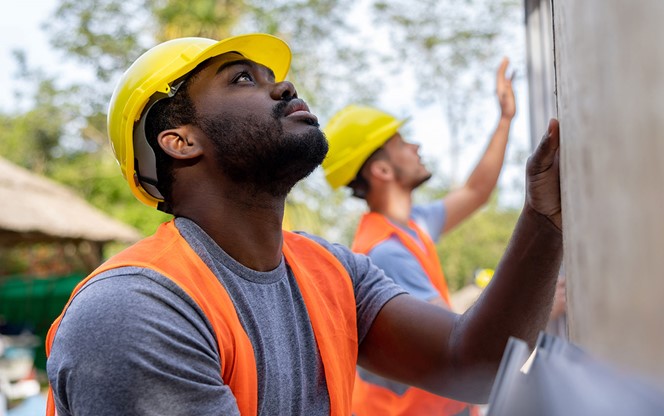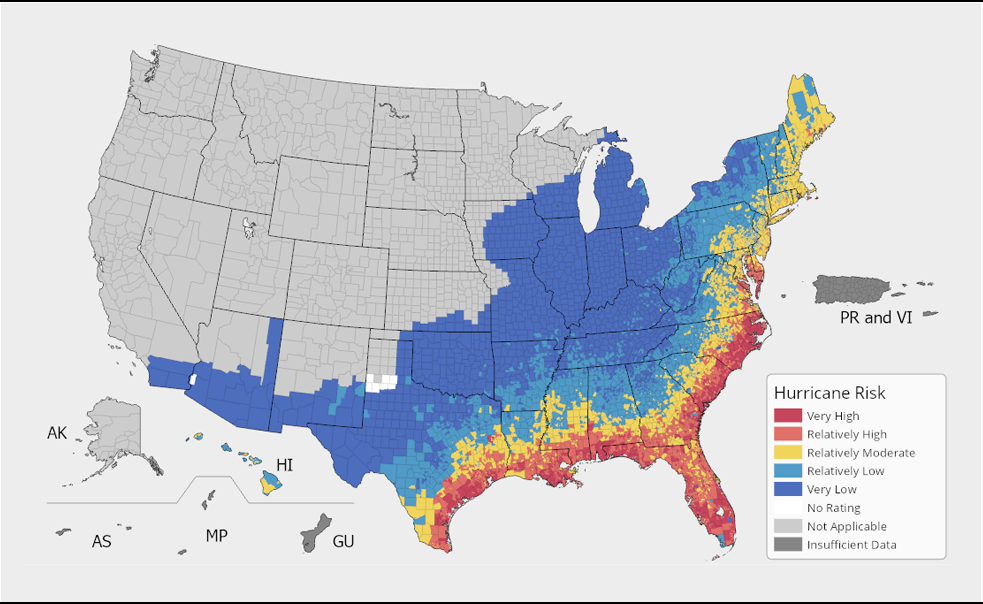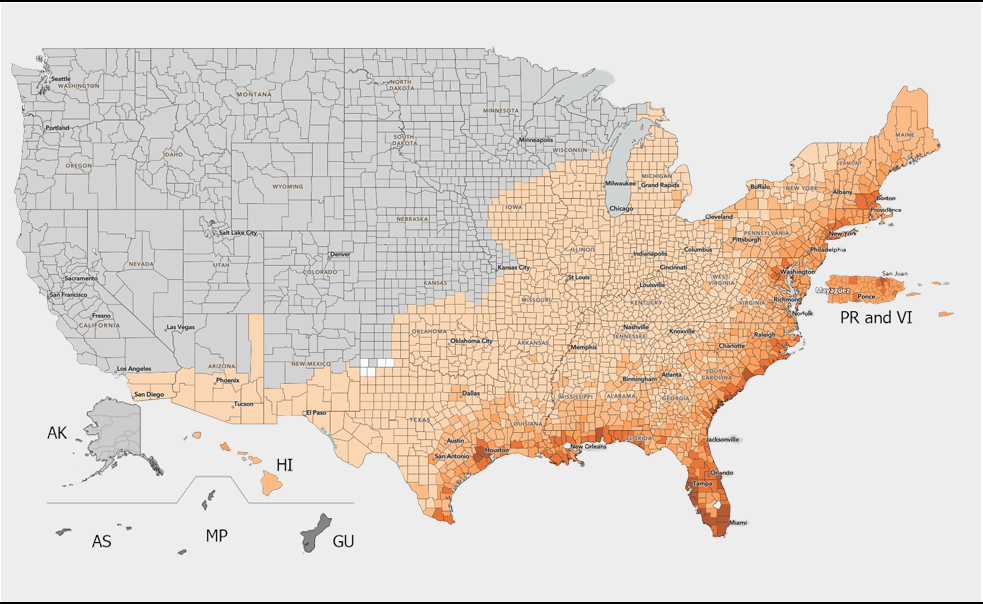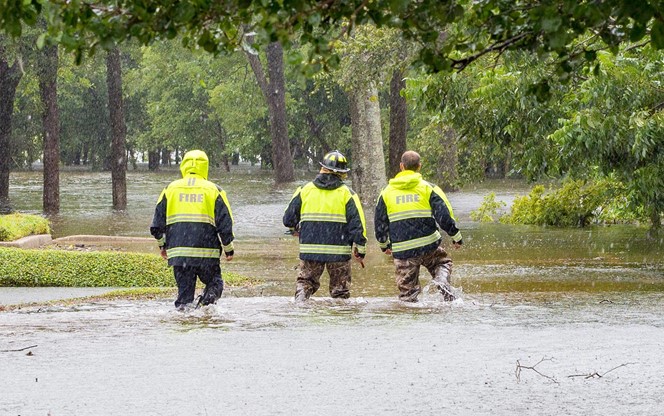

Articles | October 6, 2023
By Susan Ginexi
Hurricanes are a well-known threat for the Atlantic and Gulf Coasts, but recent experience shows they can also hit the West Coast and U.S. islands.
Organizations, especially those based on the coasts of the continental U.S. or in Hawaii, Puerto Rico or the U.S. Virgin Islands, need to become aware of their hurricane risk — and the steps they can take, discussed in this article, to mitigate both human and financial damage in the event their geographic area is hit.

Share this page
The U.S. has already been affected by four hurricanes.
Hurricane Idalia was the strongest hurricane to hit the Big Bend region of Florida’s panhandle in more than a century. While Hurricane Dora didn’t directly affect Hawaii, its powerful winds spread wildfires in Maui, including the one that destroyed Lahaina. Hurricane Hilary was the first tropical storm to hit Southern California in 80+ years. It brought record-breaking rainfall and flooding to the Southwest. Parts of Massachusetts and Maine experienced torrential rains and high winds from Hurricane Lee.
The Atlantic, Eastern Pacific and Central Pacific hurricane seasons all last until November 30.
According to the latest predictions from the National Oceanic and Atmospheric Administration (NOAA) for the Atlantic hurricane season, above-normal level of hurricane activity is now expected.
The following table summarizes NOAA’s estimates for the number of possible hurricanes to expect, including the number that will be major. NOAA considers a tropical cyclone with maximum sustained winds of at least 111 mph to be a major hurricane (i.e., Category 3, 4 or 5).
| Region | Hurricanes | Major Hurricanes |
| Atlantic* | 6–11 | 2–5 |
| Eastern Pacific** | 7–11 | 4–8 |
* NOAA press release, “NOAA forecasters increase Atlantic hurricane season prediction to ‘above normal’” (August 10, 2023)
** NOAA 2023 Eastern Pacific Hurricane Season Outlook (May 25, 2023)
Note: For the central Pacific hurricane region that covers Hawaii, NOAA predicts four to seven 2023 tropical cyclones, which include hurricanes, tropical depressions and tropical storms.
Source: NOAA’s Climate Prediction Center
In the U.S., hurricanes are the natural disasters that cause the most destruction. Hurricanes are becoming more damaging, according to research published in 2019.
The storm surges and heavy rainfall hurricanes bring can lead to flooding on the coast and even 100 miles inland and may create landslides. A hurricane’s powerful winds can damage buildings, uproot trees, down power lines and as noted above, even fan wildfires or trigger tornadoes in areas that are far from the eye of the storm.
In 2019, the Congressional Budget Office (CBO) estimated the annual economic losses to the commercial sector of the economy from hurricane winds and storm-related flooding to total $9 billion, which includes $3 billion of expected wind losses and at least $0.3 billion of expected flood losses. That estimate factored in revenue losses related to business disruption as well as the costs of repairing buildings and finding temporary space. The CBO further estimated that insurance claim payments would cover about 40 percent of the expected losses.
In July 2023, the nonprofit First Street Foundation published The 7th National Risk Assessment: Worsening Winds, which estimates an annual loss of $18.5 billion this year resulting from hurricane winds. That amount is projected to rise to nearly $20 billion in 30 years.
A flood can have a major impact even if it isn’t severe. According to the Federal Emergency Management Agency (FEMA), just a few inches of floodwater can cause tens of thousands of dollars in damage.
FEMA’s National Risk Index includes county-specific estimates.

Source: FEMA, National Risk Index, https://hazards.fema.gov/nri/hurricane

Source: FEMA, National Risk Index, https://hazards.fema.gov/nri/map
There are several steps you can take to mitigate both human and financial damage.
It’s a good idea to review your property and casualty (P&C) insurance to verify if you are adequately protected in the event of a hurricane. Commercial insurance coverages do not always include protection from flood and wind damage. Some policies exclude hurricane-related damages.
Even if they do, in geographic areas that have a high flood risk, it may be prudent to purchase a stand-alone flood policy. If you have a mortgage, the lender can require flood insurance depending on your flood zone.
Segal offers a complimentary policy review to assess the appropriateness of your current commercial insurance and flood coverage.
As part of our review, we will:
As a leading broker for plan sponsors for decades, we have the experience to give you insights into coverage gaps and options for closing them.
As part of your organization’s hurricane plan, be sure to:
Professionals from Segal’s Administration and Technology Consulting (ATC) practice and Segal Benz communications consultants can help you develop a hurricane plan.
Immediate disaster recovery needs may include working from alternate facilities, making repairs to existing facilities, replacing IT hardware, notifying customers and business partners and submitting insurance claims. The Occupational Safety and Health Administration has a Hurricane eMatrix that includes helpful information on common hazards and how to protect your recovery team.
A thorough disaster recovery plan should also cover communications about these relevant employee benefits:
To keep your people and IT systems secure, it’s also a good idea for communications to include a reminder to watch for contacts from fraudulent “charities” that may seek “donations” and/or access to your system.
Keep in mind that after a presidential declaration of a disaster, the IRS, DOL and the Pension Benefit Guaranty Corporation usually extend contribution, filing and tax deadlines for benefit plans and participants the area(s) affected by the disaster.
Segal insurance brokers, health benefits consultants, ATC professionals, Segal Benz communications consultants and Segal’s compliance consultants can assist with these aspects of recovery.
A 2021 article, “Perspectives on the Health Effects of Hurricanes: A Review and Challenges,” found that hurricanes cause and exacerbate multiple diseases. A person’s age, socio-economic status and pre-existing health conditions can modify or exacerbate the adverse health effects of hurricanes.
The paper also notes that while most adverse health impacts peak in the six months after a hurricane “chronic diseases, including cardiovascular disease and mental disorders, continue to occur for years following the hurricane impact.”
Segal’s Healthcare Informatics team can help you analyze your health plan data to identify patterns that can inform case and cost management.
We can help you develop a hurricane plan and a recovery plan that meets your needs.
Contact Us
Health, Multiemployer Plans, Public Sector, Healthcare Industry, Higher Education, Architecture Engineering & Construction, COVID-19, Pharmaceutical, Corporate, Mental Health

ATC, Corporate, Architecture Engineering & Construction, Higher Education, Public Sector, Multiemployer Plans, Technology, Cybersecurity Awareness Month, Cybersecurity consulting

Insurance, Public Sector, Healthcare Industry, Higher Education, Architecture Engineering & Construction, Corporate
This page is for informational purposes only and does not constitute legal, tax or investment advice. You are encouraged to discuss the issues raised here with your legal, tax and other advisors before determining how the issues apply to your specific situations.
© 2024 by The Segal Group, Inc.Terms & Conditions Privacy Policy California Residents Sitemap Disclosure of Compensation Required Notices
We use cookies to collect information about how you use segalco.com.
We use this information to make the website work as well as possible and improve our offering to you.